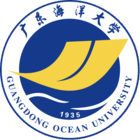详细信息
Dissecting the Role of Natural Toxins and Anthropogenic Contaminants in Mixture Effects of Seawater Chemical Cocktails on Cetacean Skin Fibroblasts ( SCI-EXPANDED收录 EI收录) 被引量:1
文献类型:期刊文献
英文题名:Dissecting the Role of Natural Toxins and Anthropogenic Contaminants in Mixture Effects of Seawater Chemical Cocktails on Cetacean Skin Fibroblasts
作者:Liu, Xintong[1];Liang, Bo[2];Yao, Siyu[1];Xiong, Anqi[1];Zhang, Xiaohua[1];Sun, Yajing[2];Zhang, Li[1];Li, Changchao[1];Ruan, Yuefei[3,4];Yan, Meng[3,4];Ho, Yuen-Wa[5];Fang, James K. H.[3,5,6];Wang, Bei[7];Leusch, Frederic D. L.[8];Schlenk, Daniel[9];Liu, Wenhua[2];Leung, Kenneth Mei Yee[3,4];Jin, Ling N.[1,3,6,10,11]
机构:[1]Hong Kong Polytech Univ, Dept Civil & Environm Engn, Kowloon, Hong Kong 999077, Peoples R China;[2]Shantou Univ, Marine Biol Inst, Shantou 515063, Peoples R China;[3]City Univ Hong Kong, State Key Lab Marine Pollut, Kowloon, Hong Kong 999077, Peoples R China;[4]City Univ Hong Kong, Dept Chem, Kowloon, Hong Kong 999077, Peoples R China;[5]Hong Kong Polytech Univ, Dept Food Sci & Nutr, Kowloon, Hong Kong 999077, Peoples R China;[6]Hong Kong Polytech Univ, Res Inst Future Food, Res Ctr Nat Based Urban Infrastruct Solut, Hong Kong 999077, Peoples R China;[7]Guangdong Ocean Univ, Key Lab Control Dis Aquat Anim, Coll Fishery, Guangdong Higher Educ Inst,Guangdong Prov Key Lab, Zhanjiang 524088, Peoples R China;[8]Griffith Univ, Australian Rivers Inst, Sch Environm & Sci, Southport, Qld 4222, Australia;[9]Univ Calif Riverside, Dept Environm Sci, Riverside, CA 92521 USA;[10]Hong Kong Polytech Univ, Dept Hlth Technol & Informat, Kowloon, Hong Kong 999077, Peoples R China;[11]Hong Kong Polytech Univ, Shenzhen Res Inst, Shenzhen 518057, Peoples R China
年份:2025
外文期刊名:ENVIRONMENTAL SCIENCE & TECHNOLOGY
收录:SCI-EXPANDED(收录号:WOS:001517161100001)、、EI(收录号:20252618671494)、Scopus(收录号:2-s2.0-105008962123)、WOS
基金:Thanks to Xin Li, Yong Han, Tian Chen, Junrong Su, Jinyan Yu, Hulong Yi, Chenyi Wang, Qisheng Li, Ball Ching, Marco Shing Hei Yuen, Yanghui Chen, and Zixin Li for their invaluable assistance in field sampling or laboratory experiments. We also thank Prof. Beate I. Escher and Prof. Bryan W. Brooks for their insightful suggestions during the early stages of this study. This study was supported by the State Key Laboratory of Marine Pollution (SKLMP) Seed Collaborative Fund (SKLMP/SCRF/0030), the Hong Kong Branch of Southern Marine Science and Engineering Guangdong Laboratory (Guangzhou) (SMSEGL20SC02), the Hong Kong Offshore LNG Terminal Project Marine Conservation Enhancement Fund (MCEF20030), the Presidential Young Scholar Scheme (P0040336) and the Research Centre for Nature-based Urban Infrastructure Solutions (P0053045) of The Hong Kong Polytechnic University, and the Co-funding Mechanism on Joint Laboratories with the Chinese Academy of Sciences sponsored by the Research Grants Council of the Hong Kong (JLFS/E-502/24). SKLMP receives regular funding from the Innovation and Technology Commission (ITC) of the Hong Kong SAR Government; however, any opinions, findings, conclusions, or recommendations expressed in this publication do not reflect the views of the Hong Kong SAR Government or the ITC. TOC of this study is created in BioRender. L.X. (2025) https://BioRender.com/undefined.
语种:英文
外文关键词:marine pollution; marine mammal; mixture effect; in vitro bioassay; species-specificsensitivity
外文摘要:Marine mammal skin, in contact with seawater containing diverse chemicals, reflects species health and environmental quality. The contributions of natural toxins and anthropogenic contaminants to the effects of such chemical mixtures remain poorly quantified. Using skin fibroblast cells from the Indo-Pacific finless porpoise and humpback dolphin, we assessed the toxic potential of seawater extracts, focusing on cytotoxicity and intracellular reactive oxygen species (ROS) formation. Among the 38 studied chemicals prevalent in seawater, four algal toxins were 1-6 orders of magnitude more potent than 30 anthropogenic chemicals, including antibiotics, ultraviolet filters, per- and polyfluoroalkyl substances (PFASs), and polyaromatic hydrocarbons. Pectenotoxin-2 accounted for 92% of the cytotoxicity triggered by the mixture of all studied chemicals, which collectively explained 34% of seawater-induced cytotoxicity in porpoise cells. For ROS induction, although all studied chemicals collectively explained a small fraction (<1%) of the effects elicited by seawater extracts in both cell lines, okadaic acid and gymnodimine accounted for similar to 80% of the mixture effects of all chemicals, with additional contributions from PFASs. Extending the approach to other coastal habitats where concentration data are available revealed algal toxins as dominant contributors among the known contaminant mixtures eliciting dermal toxic potential. This study provides novel insights to guide the identification of toxicity contributors across dermal health end points, with a balanced perspective on natural toxins and anthropogenic contaminants in addressing their mixture effects on sentinel species health.
参考文献:
![]() 正在载入数据...
正在载入数据...


